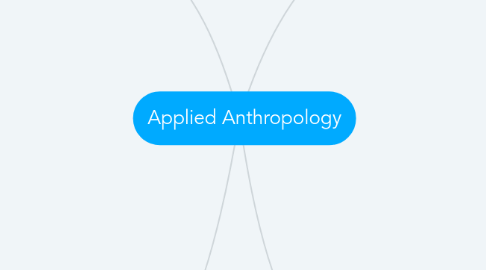
1. Medical Anthropology
1.1. Ancestors
1.1.1. Disease
1.1.2. Complications
1.2. Prevention
1.2.1. Vaccines
1.2.2. Healthy living
1.3. Healing
1.3.1. Medication
1.3.2. Rehabilitation
1.4. Today's Work
1.4.1. Erica Caple James investigated how behavior, culture, and structural inequalities impacted the health of rape victims in the aftermath of Haiti’s coup period of 1991-1994. She found that the victims that took the aid designed for them faced fracturing within their community. And that Haitians that were in extreme poverty fought to get a hold of the funds coming their way.
2. Business Anthropology
2.1. Theories and Practices
2.1.1. Needs of Private Sector Orgs
2.2. Lines of Activity
2.2.1. Tech and Design
2.2.2. Organization and Workplace
2.3. Today's Work
2.3.1. Advertising and Market Research
2.3.2. Anthropology and Business go hand in hand. Large companies, or even small ones, can study how culture effects how they see advertisements (TV, mobile devices, billboards, etc.) These companies can learn how to interact with an ever changing world and grow their business, just by studying how culture affects a person's ability to see ads for different products.
3. Environmental Anthropology
3.1. Large scale disasters
3.1.1. Effects on Humans and Animals
3.1.2. Effects on habits of animals
3.1.3. Clean up
3.2. Prevention
3.2.1. Potential risks for it happening again
3.2.2. Laws in place
3.3. Today's work
3.3.1. After the Deepwater Horizon Oil Spill, much of the wildlife was effected, and still is. Oil spills do damage immediately and continue to do so, even after clean up. Animals lose their homes and become endangered; underwater plants die out because they can't get their nutrients; even life on land changes. Humans can't eat seafood during that time because we don't know what was contaminated.
4. Forensic Anthropology
4.1. Archeaology
4.1.1. Locating lost civilizations
4.1.2. Learning about where Homo Sapiens came from
4.1.3. Evolution from the first human ancestor to now
4.2. Crime Solving
4.2.1. Identify Remains
4.2.2. Dental Records
4.2.3. Forensic Analysis
4.3. Today's work
4.3.1. LSU college graduates and a professor found a way to identify the chemical composition of fingermarks at a crime scene. This could potential be used to identify lipids, proteins, genetic material, and even trace amounts of explosives.

